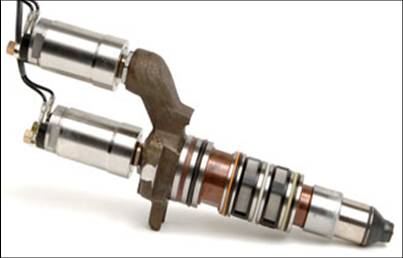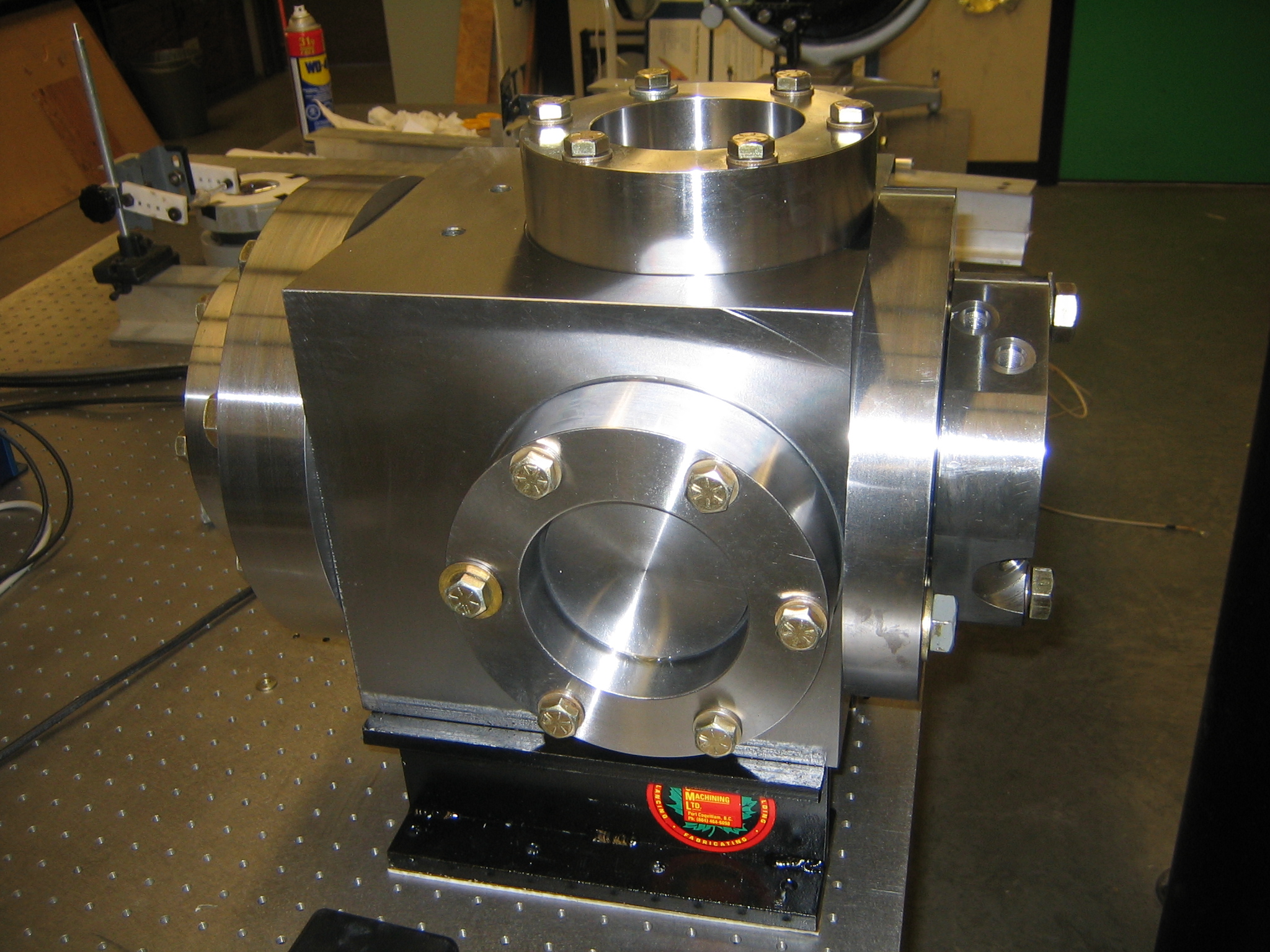
Westport high-pressure gas injector
Motivation
In all internal combustion engines, the quality of fuel injection has a profound influence on the emissions and performance of the engine. Fuel injectors,supporting controls and fuel supply systems account for a large portion of the engine cost, thanks to the large number of high-precision parts involved.
Research Areas
We are working with Westport Innovations to develop better fuel injection methods and combustion strategies for heavy duty engines. To support this, we are developing novel diagnostic techniques, including a new soot sensor to resolve the differences in emissions from one engine cycle to the next.

UBC Injector Visualization Chamber (IVC)
The engines group at UBC has investigated a wide range of injection conditions and practices, and with Westport have found a variety of methods of reducing engine-out soot emissions by 80-90%
An benefit of the project has been the development of the Injector Visualization Chamber (IVC, at right), which can deterime injector flow and spray characteristics at realistic fuel and background pressures. Initially, fouling of the IVC windows prevented us from imaging injections at steady state. Some early (spectacularly bad) atomization is visible below for injections NOT at steady state.

Non steady-state injection

Co-injection spray in IVC (shroud visible in foreground)
Recently, a retractable shroud has been added to extract all sprays until the injector reaches steady-state operation. At this point, the shroud is extracted so that imaging can occur (shown at right; shroud is the rectangle to the right of the spray).
A more recent development is a very fast soot sensor that can resolve cycle-cycle variations in soot emissions.
Results
With the UBC Engines group, we have made major reductions in the engine-out emissions from direct-injection natural gas engines. Much of the foundational work is described in the PhD thesis of McTaggart-Cowan (and related papers), and the recent PhD thesis of Faghani provides substantial updates on important topics including the effect of multiple gas injections on emissions, partially premixed combustion and phenomenological modelling of soot formation in the engine.